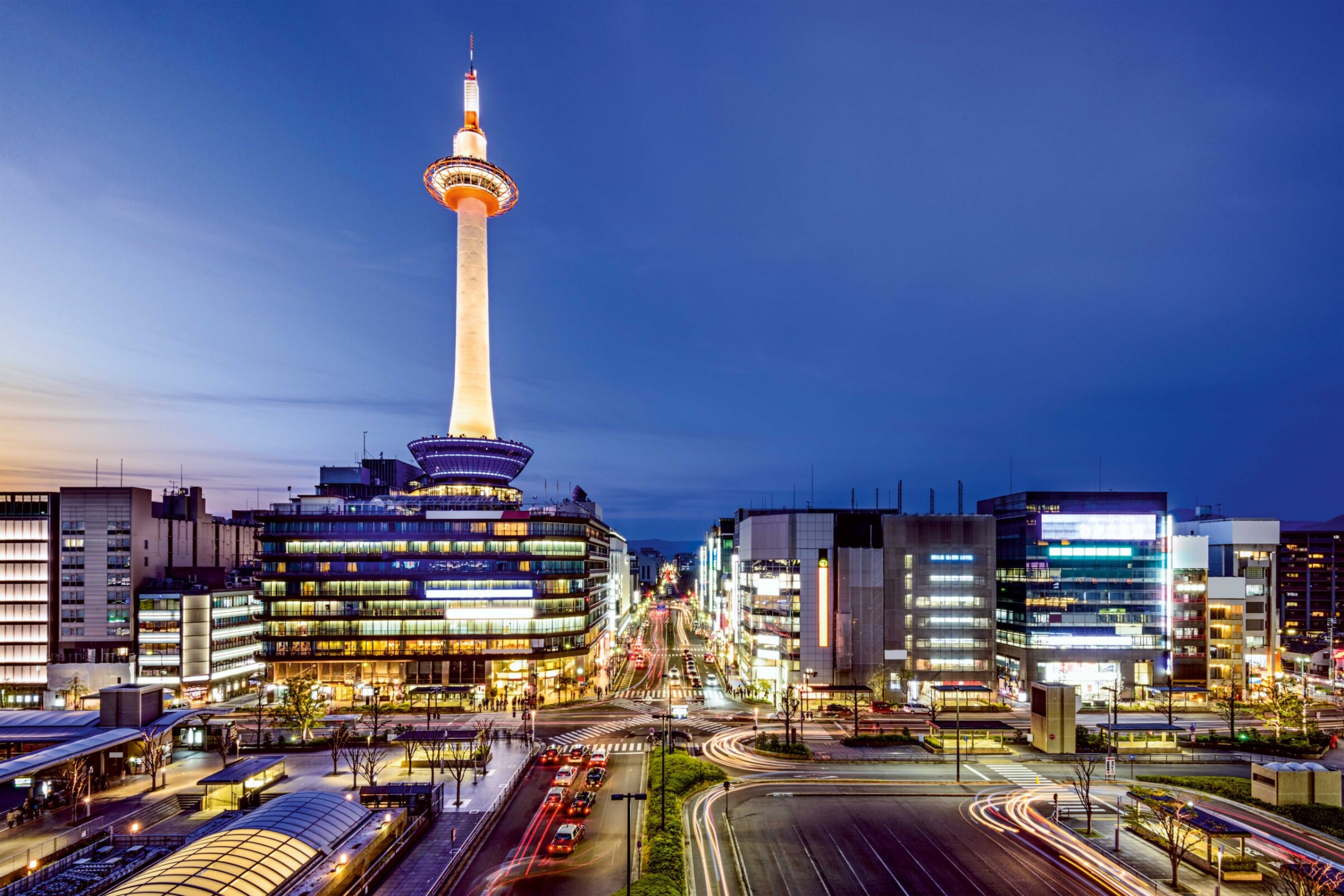
In the production of precision dies for cold forming, the NICHIDAI Corporation occupies one of the world’s leading positions. Thanks to its skilled use of electric discharge machining, the company handles the production of dies and formed parts, as required primarily in the automotive industry, and is now making inroads into the fields of automotive component assembly and the production of industrial filters. We were interested to learn about the mindset behind the company’s technological development.

Skilled use of EDM
The beginnings of NICHIDAI go back to 1959. The founder and former boss Yoshiaki Tanaka rented a garage in Osaka, had his business registered as “Tanaka Gokin Seisakusho” meaning “Tanaka Alloy Works”, and produced drawing plates – dies for drawing and constricting wires – with his three employees: a garage business in the literal sense. From the moment of setting up his business, Tanaka pioneered the development of his own technology. The first Japanese EDM machine came onto the market in 1954, but for the working of cemented carbide, the material from which the drawing plates were made, Tanaka developed his own system from a converted horizontal boring machine, basing his ideas on the work of the Lazarenkos, the inventors of electric discharge machining. This EDM was superior in performance to the commercially available machines of its day and probably contributed considerably to the company’s high sales with drawing plates.
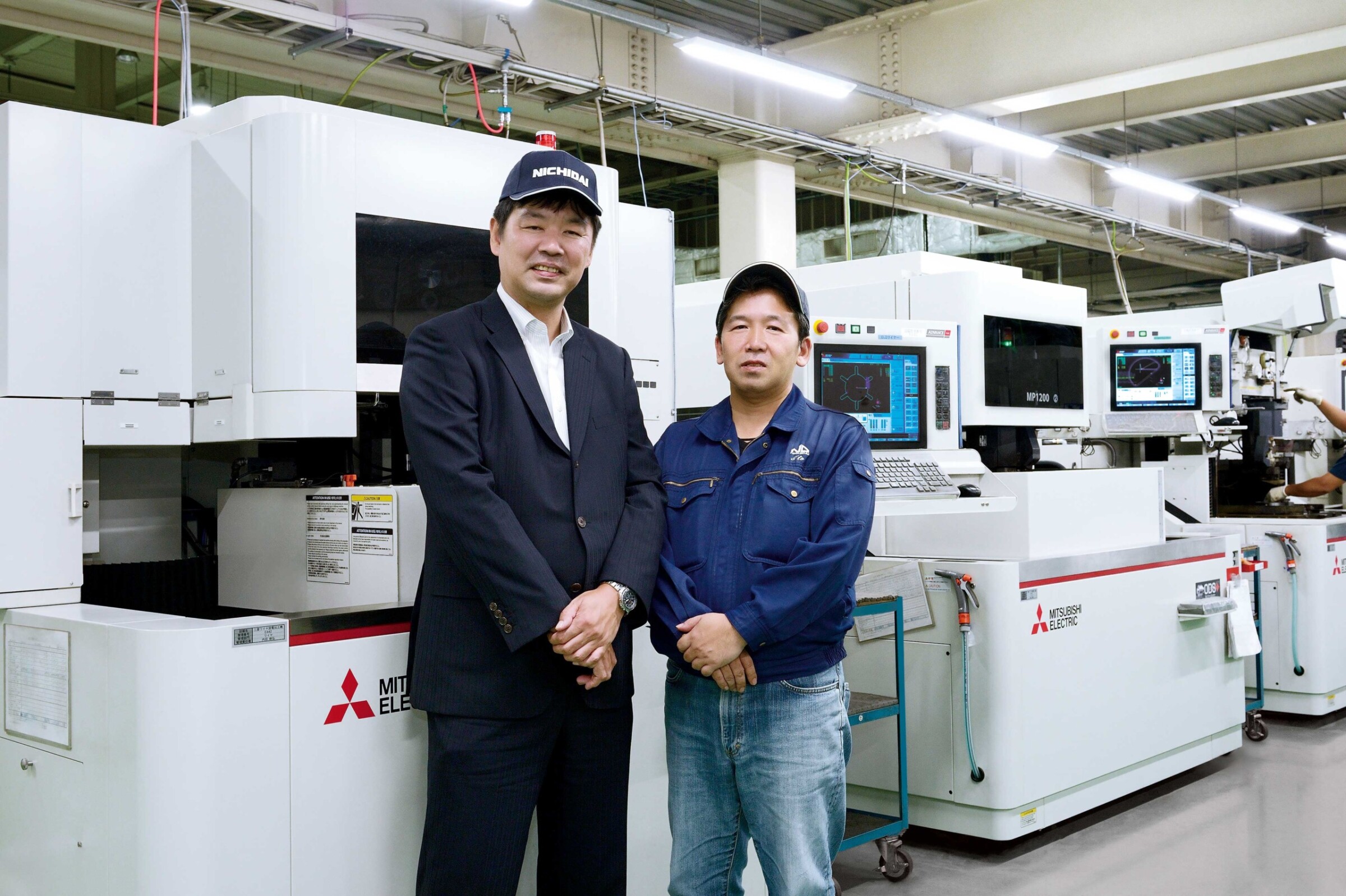
Production Manager Masato Ito (right) and Mitsubishi Electric’s West branch EDM section manager Satoshi Aoki (left).
Greater scope for action due to deeper knowledge
The NICHIDAI CORPORATION was founded in 1967. A 660 m² shop in Neyagawa in Osaka Prefecture became the new headquarters. The name “NICHIDAI” is in fact the acronym for the company founder’s aspiration to become “Japan’s No. One die manufacturer”. This was also the period in which cold forming techniques were just being introduced in the production of Japanese car components. However, tools made of cemented carbide, as required in cold forming, had to be imported at great expense – so automotive manufacturers and component suppliers were on the look-out for firms capable of producing suitable tools in Japan. They chose NICHIDAI as it was already familiar with the working of cemented carbide. This prompted the company to shift its focus to the production of dies for the cold forming of automotive parts and, together with the expanding automotive industry, the company’s business prospered.
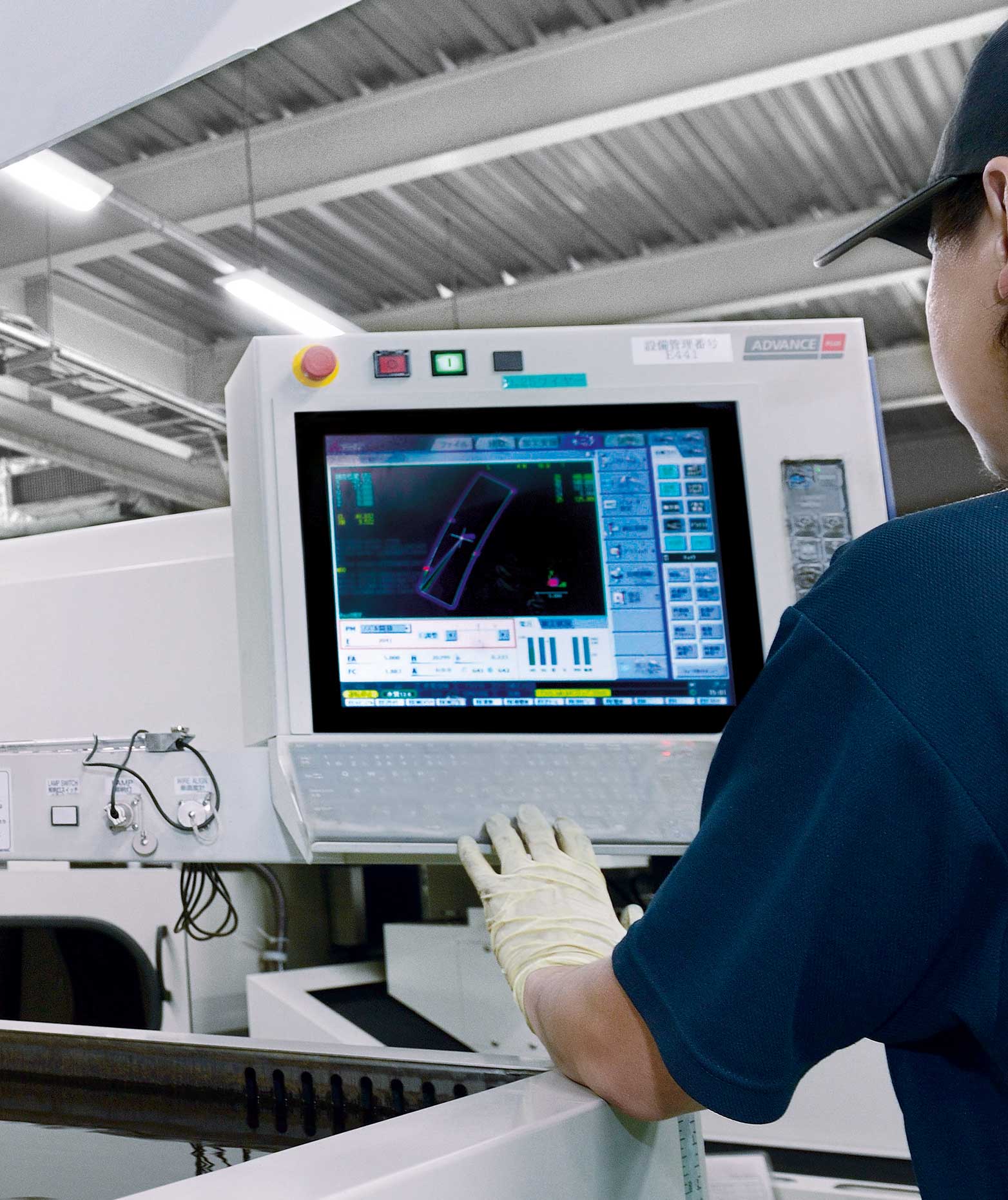
Outstanding results in oil – the MX600 in action.
In 1971 the parent plant was moved to Kyotanabe in Kyoto Prefecture, where today’s headquarters are also located. In 1988, it was joined by the Ujitawara plant in the eponymous locality in Kyoto Prefecture and, by introducing its triple-action hydraulic press, the company extended its business to include precision-formed products, enabling the company to conduct its own direct research into forming techniques. NICHIDAI’s President and CEO Motonobu Furuya explains: “If you handle all the upstream and downstream processes yourself, you can develop your own technology in close consultation with the customer. This way you can deepen your knowledge and expand your room for manoeuvre. For our company, this marked a turning point.”
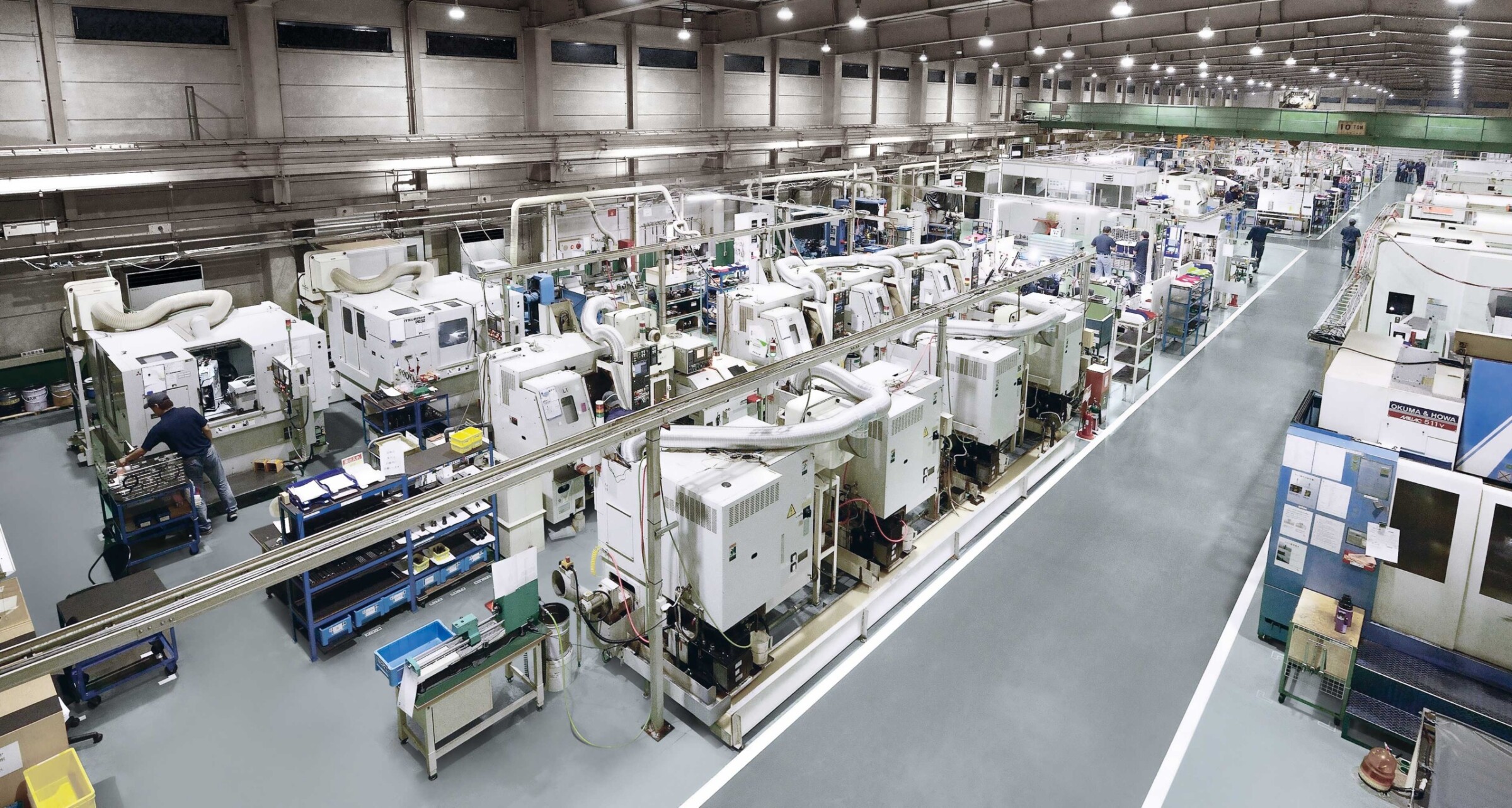
Hall 3 in Ujitawara: where the machine tools are.
Today, the company produces a wide range of dies for chassis and engine components and manufactures formed parts – both as prototypes and mass-produced items – entirely in accordance with the needs of the automotive and component supply industries. The history of automotive component suppliers is also a history of reducing costs by switching from cutting to forming. NICHIDAI has had a large hand in these cost reductions, as Furuya is well aware: “We were soon able to mass-produce bevel gears and also cross joints that were previously expensively machined with dedicated equipment.”
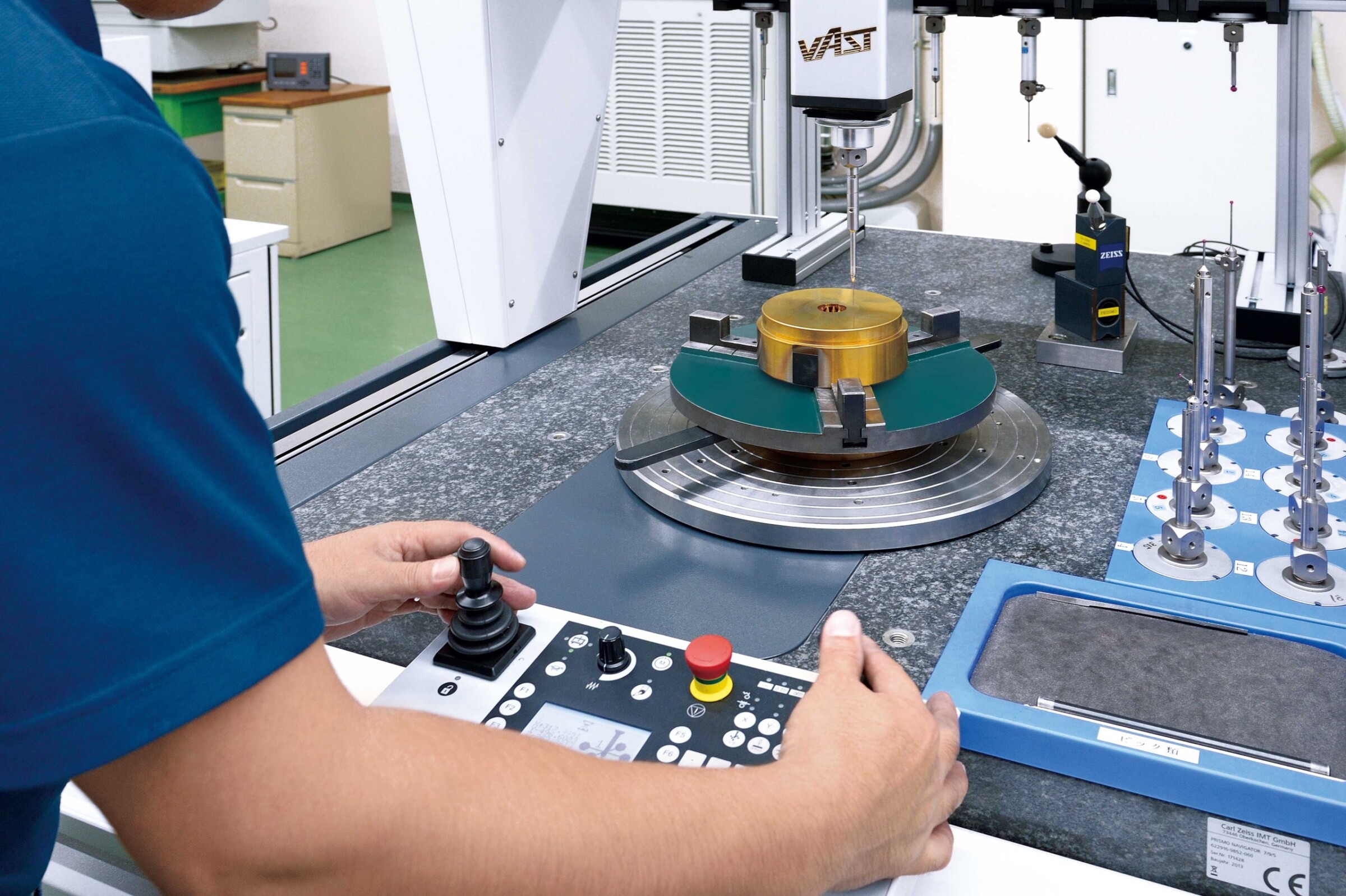
The dies produced with the use of EDM systems are subsequently checked with the coordinate measuring device.
In addition to its net-shape business, i.e. the production of dies for cold forming and precision-formed parts, NICHIDA recently extended its business to include filter business and the assembly of components for turbochargers in diesel engines. Of its sales of 14,264 Yen, 51.2 per cent is generated by net-shape business, 34.2 per cent by assembly business and 14.6 per cent by filter business (consolidated, March 2016).
In its initial years, the company resorted to internally built EDM systems, but with growth in output, the strategy was modified and mass-produced machines were adopted. At the end of the Sixties – at the time of the Neyagawa plant – NICHIDAI finally started to use machines from Mitsubishi Electric. At present, dozens of wire-cutting and die-sinking machines are in operation. Production Manager Masato Ito is aware of the benefits: “To meet the high quality aspirations of our customers, we have to push the machines to their performance limits. This is where we depend on being able to work together with machine manufacturers. Our expectations of Mitsubishi Electric are often extremely high – but are always met.”
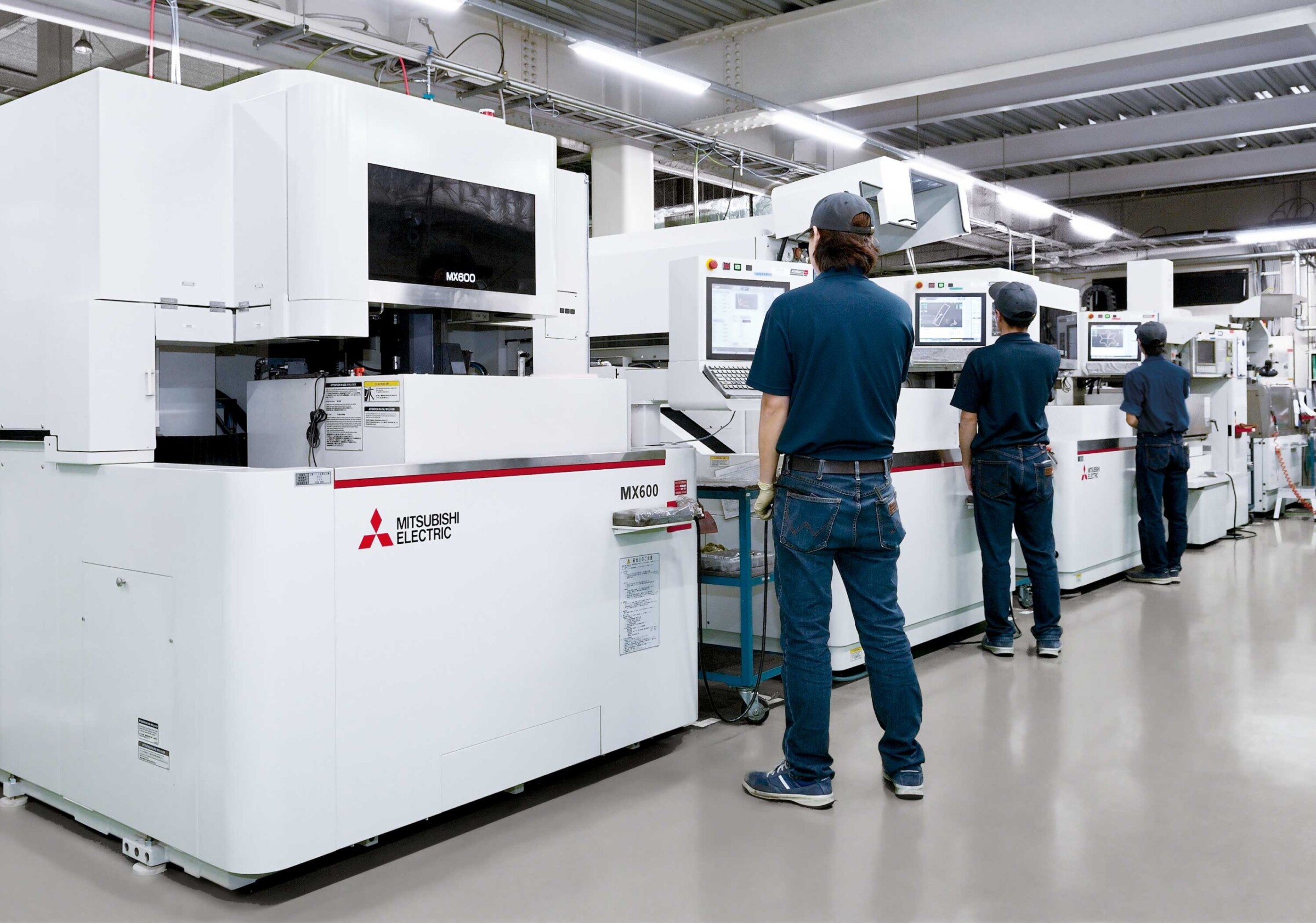
Concentrated EDM power line-up
Improved productivity thanks to expert assistance
In 2005, Ito – in cooperation with Mitsubishi Electric, among others – was responsible for the development of an automation system consisting of three wire-cutting machines of the EA12V model, a handling robot from Mitsubishi Electric and a coordinate measuring device, all of which are in operation around the clock. The robot loads the EDM systems with workpieces and electrodes. When cutting has been completed, the machined item is transferred by the robot to the coordinate measuring device, where the accuracy of shape is tested and the process autonomously optimised before the workpiece is passed on to the next process step. However, this was no easy task, as it involved uncharted technological territory to some extent: “During the test phase I occasionally requested visits at unsocial hours from the technicians at Mitsubishi Electric and at the manufacturer of the coordinate measuring device.
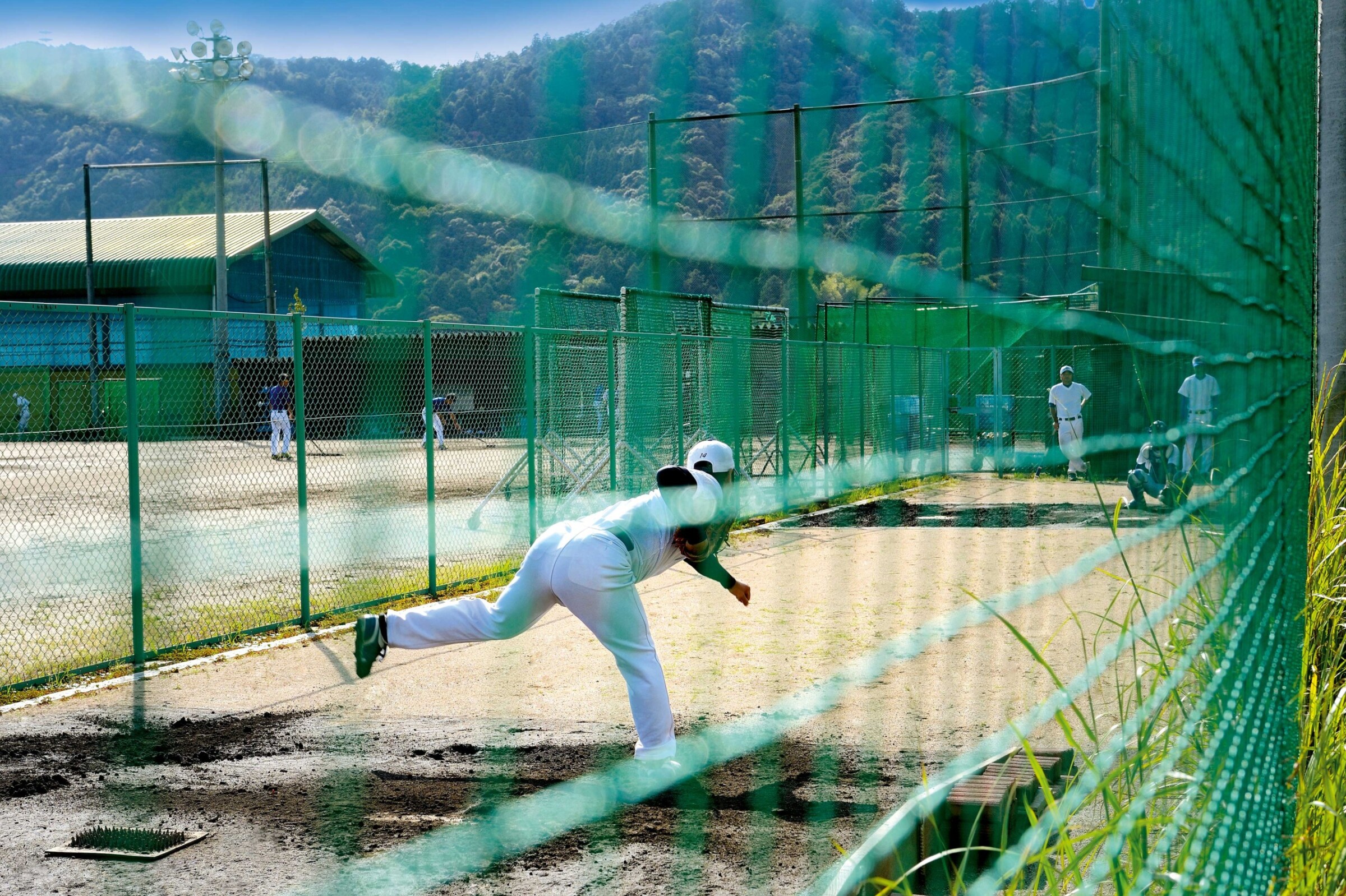
The company’s baseball team founded in 1997 has grown into a serious contender and today is even bringing forth professional players.
Improved productivity thanks to expert assistance
The adjustments were also very time-consuming, but our colleagues from Mitsubishi Electric patiently helped us. Thanks to this support, everything runs smoothly today and our productivity has been boosted enormously,” says Ito.
“VSOP”: Vitality, Speciality, Originality and Passion
And when Mitsubishi Electric launched its new MX600 with oil-bath machining in 2015, Ito again often called on the after-sales service. “Wire-cutting is usually performed in water, but machining in oil yields surfaces with an even smoother finish. With oil as the dielectric, wire-cutting takes two to three times longer than with water, thus reducing productivity. “We jokingly suggested simply trying to double the speed, and then we obtained a modified machine that was at least significantly faster without us having to compromise on process accuracy.”
New technologies for superior performance
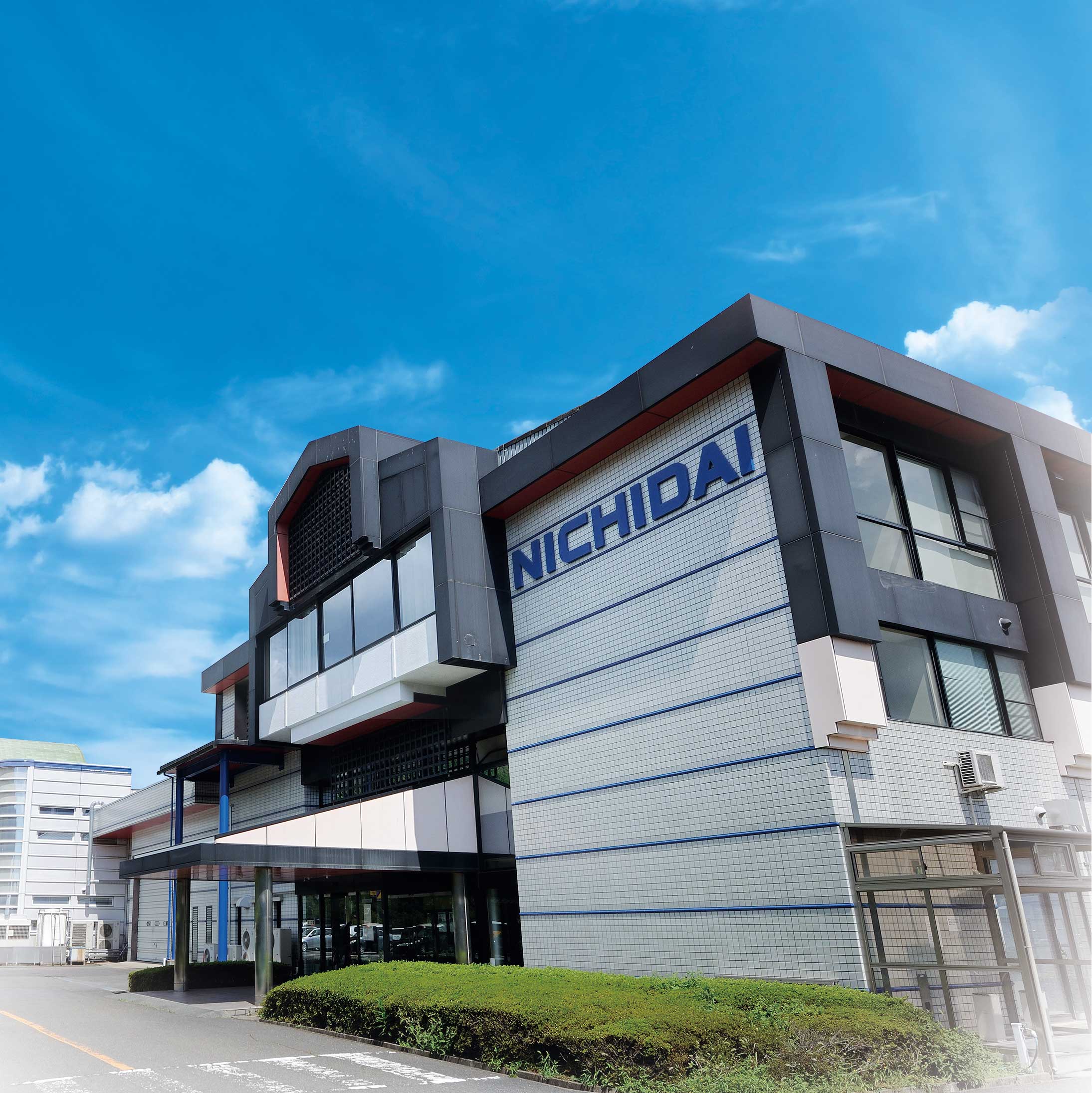
NICHDAI Corporation
Name and place of company:
NICHDAI Corporation
Japan
Founding year:
1959
President and CEO:
Motonobu Furuya
Number of employees:
645
Core business:
Development, production and sale of precision dies, mass production of formed parts, assembly of components for diesel engines, development and production of sintered mesh filters
NICHDAI Corporation
General Affairs Division
13 Kitamachida,Takigi, Kyotanabe Kyoto 610-0341, Japan
Tel +81 77462 3880
Fax +81 77462 3702
assembly@nichidai.co.jp
www.nichidai.jp
NICHIDAI as a company cannot be seen independently of its technology. Over half of the moulds and dies we produce worldwide are used for the working of sheet metal or for moulding plastics. In Japan, dies for cold forming account for just 3 to 4 per cent of products from this sector. Nevertheless, this is a technically highly exacting sector, as these dies have to withstand high loads. At NICHIDAI we are constantly endeavouring to refine our technology and to compete with the world’s best. Towards his staff, company founder Tanaka humorously compared this to “VSOP”, an abbreviation used for designating a brandy of a special quality. At NICHIDAI, these initials, according to Tanaka’s interpretation, stand for Vitality, Speciality, Originality and Passion, describing how the company originally saw itself. Our offering is intended to transcend mere production, bring forth technologies and improve communication with the customer. We want to demonstrate VSOP in all business areas, be it in development, production or sales. “Have the confidence to be Japan’s No. One in cold forming,” Tanaka said, “Think for yourselves”. Behind this is the notion that the company will only truly develop when we train engineers capable of thinking for themselves who are enterprising enough to take the initiative.
In the early years – when our company was still a modest size – we were relatively successful in repeating a message until it was finally grasped. When the company reached a certain level of complexity, this procedure didn’t work any longer. Today we offer systematic training that includes not only on-the-job experience but also assistance obtained from external experts. I am firmly convinced that we can advance the company even better if we now systematically ensure that our people can achieve personal fulfilment by taking responsibility at work – in other words, by professionally promoting the company’s original values.
Many Japanese vehicle manufacturers have now established operations in Thailand. A global export base for automotive parts is currently evolving there, so we also decided to take the step. We train engineers in Thailand as well. However, this doesn’t work with the same content as in Japan, and we are making efforts to bring training into line with Thai culture.
As far as I know, back to the end of the Sixties – so before my time at the company. Financing them proved very costly for NICHIDAI at the time, but payment in instalments was agreed, which Mr Tanaka was evidently very grateful for. Our dies and formed parts are produced almost exclusively in small numbers with great variation, but without causing machine wear. When our business expanded further, more and more EDM systems were gradually added. The reliable after-sales service is one reason why we are still using machines from Mitsubishi Electric. Another is that for the production of specialised dies we quite often require machines with our own, original specifications. In 2013, for example, in cooperation with Mitsubishi Electric, we designed our own robot system for wire-cutting machines which performs excellently in the production of unconventional electrodes. We are very appreciative of Mitsubishi Electric’s willingness to take our needs into account in the development of technologies.
I believe that what our customers expect of us is ultimately technology. Cost reductions and accelerated delivery are achieved, after all, by technology. We have always devoted ourselves to the development of technical processes enabling us to form a huge variety of products. Yet the scope for forming is practically boundless, and there will be no let-up in the advance of technology. Tomorrow may see the development of production methods that combine forming and bending techniques. And we are constantly advancing the development of new forming technologies in cooperation with the University of Osaka. There’s no future for die manufacturers who neglect development, and only companies that are open to technology will have a future. We can still proudly claim that our dies are technologically among the best in the world, but if we rest on our laurels, we will quickly vanish from the scene. Tanaka wanted to establish Japan’s No. One company for dies, and this wish, which he even immortalised in the company’s name, has been fulfilled in our dies for cold forming. Although there are no detailed data on dies in our field, so this is only a supposition, we may well also be the Global No. One. However, we’re not satisfied with what we’ve achieved so far and aim to always constantly refine our technology.
Quite a number of Japanese companies have had to wind up their company teams with the stagnation of their core business, but your team has been continuously active since its creation in 1997. Thanks to the baseball team, the name of our company is known all over Japan. Unfortunately we can’t offer the same level of support as large corporations who regularly compete in city tournaments or the Japanese professional league. And our baseball players also work full-time every day and can only go to training in the evening. Even so, they have already participated twice in city games and four times in the Japanese championship. The euphoria when we come through the qualification stages and compete in a large-scale national event generates a huge sense of shared identity. For a company’s development, enthusiasm and team spirit among the company’s employees are essential. Our baseball team has achieved just that for us.
President and CEO
NICHDAI Corporation
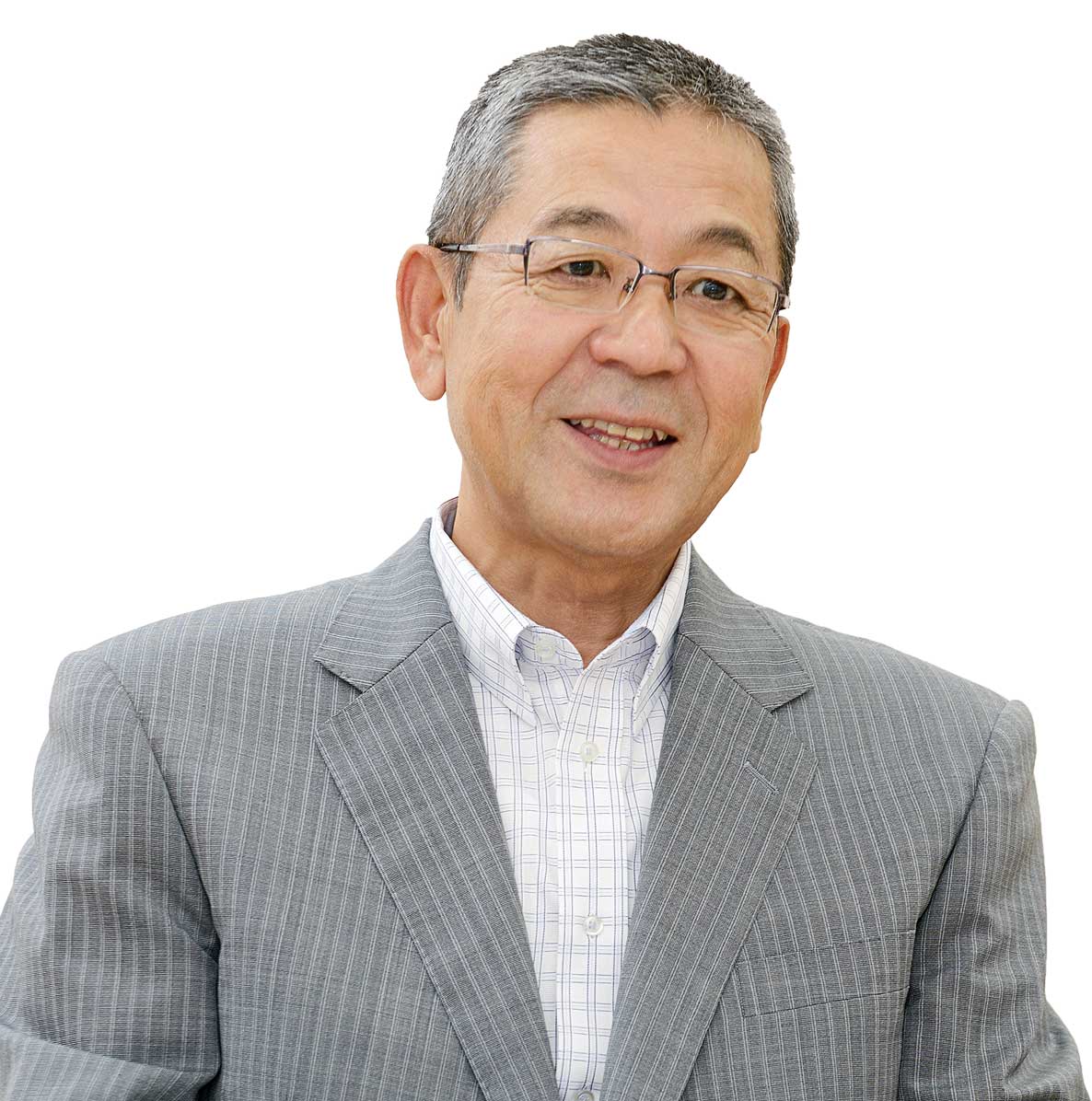
Motonobu Furuya President and CEO
Fields marked with a * are mandatory.
Mitsubishi Electric Europe B.V.
German Branch
Mitsubishi-Electric-Platz 1
D - 40882 Ratingen
Sales
Tel.: +49 (0)2102 / 486 - 6120
edm.sales@meg.mee.com
Service
Tel.: +49 (0)2102 / 486 - 7600
edm.hotline@meg.mee.com
Applications
Tel.: +49 (0)2102 / 486 - 7700
edm.applikation@meg.mee.com
Spareparts
Tel.: +49 (0)2102 / 486 - 7500
edm.parts@meg.mee.com